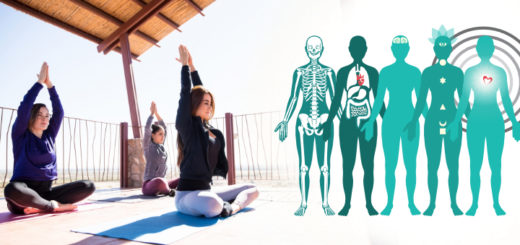How to plan a yoga class
3I was educated as a school teacher, and in the past I had written my fair share of lesson plans that usually started with “By the end of the class the students will be able to …” Every lesson needs to have a purpose, and that purpose needs to be clearly articulated, otherwise we end up accomplishing nothing of lasting value.
It works the same in yoga – every yoga class we teach needs to have a purpose. We usually call it intention, and it’s basically an answer to the question “What are you trying to accomplish?” It can also be framed as a statement: “By the end of the class the students will experience … (greater range of motion in the shoulder, higher breath threshold, sense of stability and ease, deeper connection to their community, etc.)”. Of course, we cannot control the student’s experience, so not everybody will feel the same, but we can certainly make strides in moving them toward that intention.
I always thought of this sort of planning as reverse engineering, because you work your way backwards from the desired outcome. You set a goal of where you want your students to arrive (point B) and figure out what needs to happen for them to get there from their current state (point A). There are many paths to get from point A to point B, but it’s clear that some of them will be more effective and direct then others. And since you always have preset time limitations for your class, the more directly you can get there, the better.
To find the most direct path, it is useful to first identify which dimension of the human system your intention addresses (physical or vital body, intellectual mind, personality or heart center). Each dimension has its preferred set of yogic tools that makes it easier to get access to that particular dimension. And one of those preferred tools needs to become primary in manifesting your intention, with other tools playing a supporting role.
Let’s say that your intention for the class is to relieve shoulder tension. This intention corresponds to the physical body (Annamaya), and the main tool to get access to Annamaya is asana. Once you make a selection of your primary tool (asana), you will need to come up with three specific ideas that will help you manifest your intention (to relieve shoulder tension). For example, you can choose:
- Poses that strengthen the upper back and muscles that bind the shoulder girdle to the spine ( to provide better support for the shoulder);
- Arm sweeping motion to mobilize the shoulder (and increase blood flow to the joint);
- External shoulder rotation motion to stretch the front of the shoulder (and counteract the common habitual action of internal shoulder rotation).
Then you can choose 1-2 poses for each idea, and one or more poses that manifest several of those ideas at the same time.

Then it’s just a matter of arranging your core ideas in proper order and adding appropriate warm up, along with preparation and compensation poses for more challenging movements.
Your supporting elements might be breath awareness and visualization. They need to run through the entire practice as an undercurrent to support and help manifest your main intention. In terms of breath, you can focus on deep connection between breath and movement to minimize the risk of injury. In terms of visualization, you can thread the idea of awareness of the shoulder girdle throughout the practice, and then bring it to its logical conclusion with the final visualization of the shoulder girdle sitting on top of the ribcage (to increase awareness of the structures that comprise the shoulder girdle, and to relax the muscles that bind the shoulder girdle to the ribcage and spine).
Once all the elements are in place, you would go through the entire practice and edit out the filler elements that inevitably creep in and distract from the main intention. Every single thing you teach to your students needs to have a clear purpose within this practice in moving your students toward point B of your intention.
Afterwards, you would check the practice again for flow and consistency, and voila! – you have an effective and meaningful yoga practice. I put all those points into this How to plan a yoga class template for quick reference.


Sequence Wiz members will get a pdf handout of this template on Friday.
Learn more about Sequence Wiz membership >
Here is an example of a complete yoga practice based on this template >
And here are some suggestions on how to design effective yoga practices for different kind of intentions:
How to create a target yoga practice for a specific body area >
How to create a yoga practice to prepare for a difficult posture >
How to design a yoga practice for a specific activity >
8 steps to design a breath-centered practice >
Extend your yoga beyond the physical: How to design an integrative practice >
How to create a short targeted yoga practice for physical tension >
How to create a short targeted yoga practice for energy management >
How to create a short targeted yoga practice to change your mental state >
[jetpack_subscription_form]




















Due to the way yoga schools pump out 200hr teachers they spend zero time on anatomy or what the physical benefits are and how to pre to get to that particular pose. After reading this I’m losing confidence when I realize I don’t know enough
Hi Karen, I also felt the same but then few years ago I found Olga’s page and she has been my light and my favourite teacher – her articles are so full of wisdom and she writes so well so I’m sure you can learn from just by absorbing her great content! I don’t know Olga in person but the way she represents everything I’m her raving fan for the last few years and I’m sure you will find loads of practical knowledge here.
Hi Olga,
You talk about an objective or intention as if it was the whole purpose of the class, or at least that is what I interpret.
Could you comment on that from the perspective of the sutra 1.12 about effort and detachment of the goal and the comment in the Bhagavad Gita about doing the effort without expecting to enjoy the fruits of that effort?
thank you for your writings and thoughts, I always look forward to reading them.
Cheers